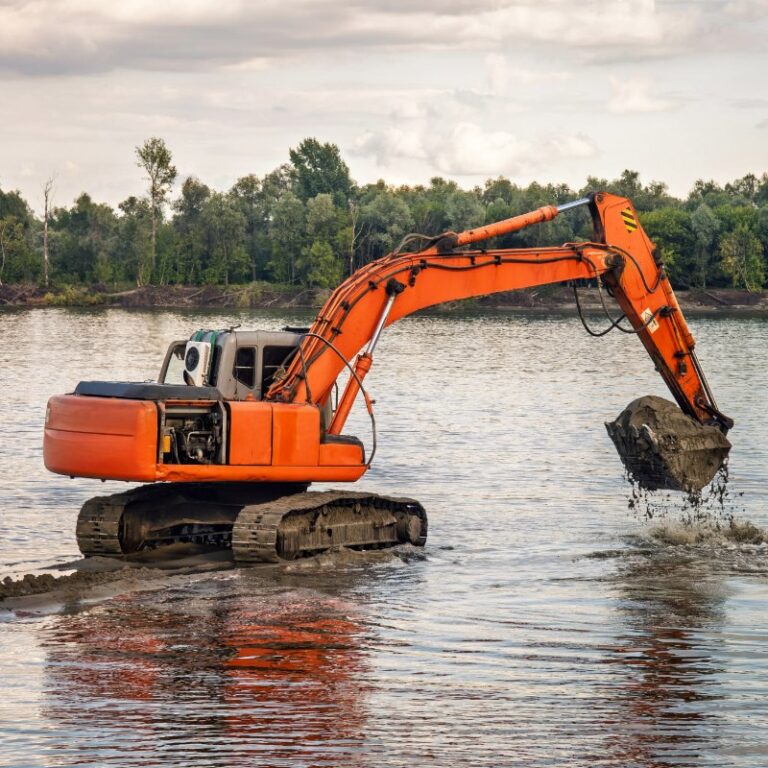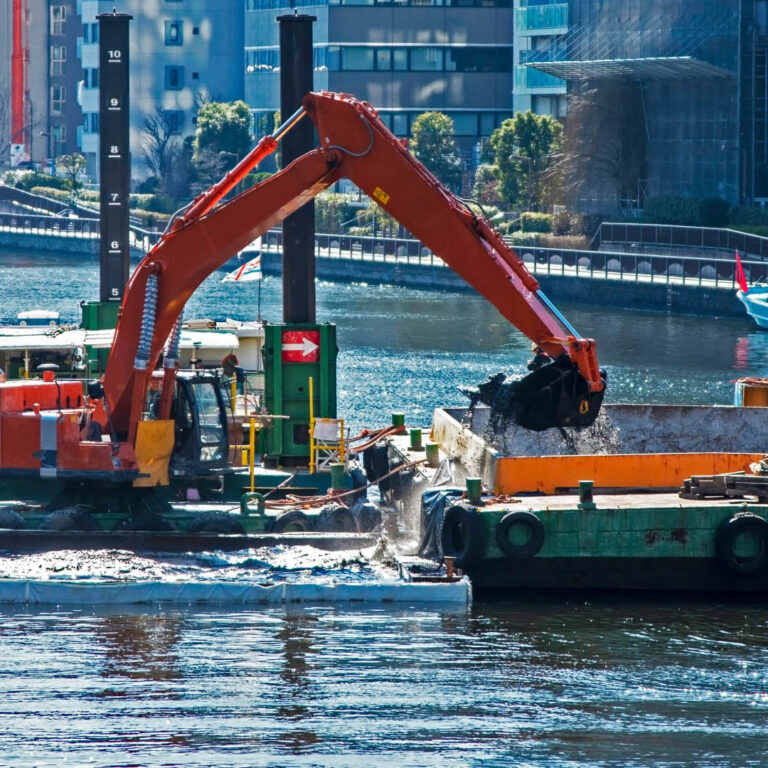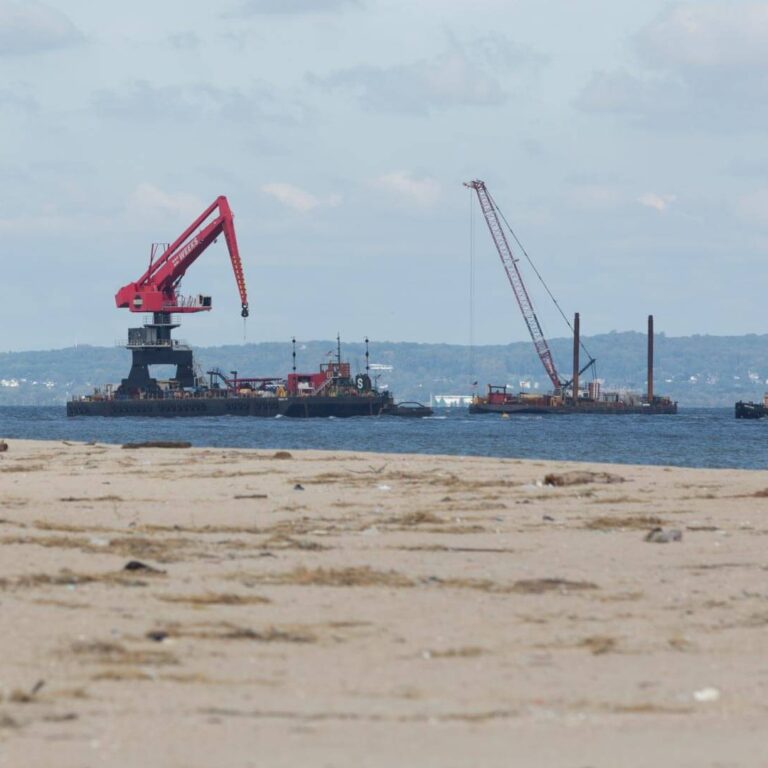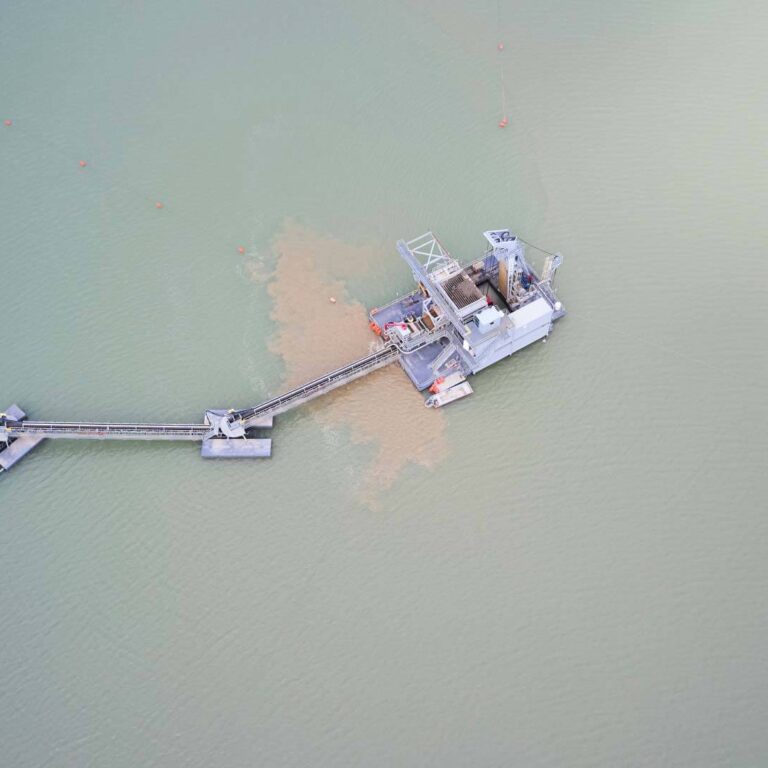An Overview of Marine Dredging Operations: Techniques and Equipment
Marine dredging operations involve the excavation and removal of sediments, debris, or contaminants from the bottom of oceans, rivers, harbors, and inland water bodies. These operations are essential for maintaining waterway infrastructure, ensuring navigability, and supporting coastal development. By clearing built-up materials from the seabed or lakebeds, marine dredging operations help preserve critical shipping channels, restore environmental balance, and protect coastal communities from flooding.
The primary purposes of marine dredging operations include maintaining navigation channels, land reclamation, environmental remediation, and flood control. These activities support not only commercial and industrial interests but also environmental and public safety goals.
Lake dredging, a key form of inland marine dredging, focuses on restoring depth, improving water quality, and reducing sedimentation in lakes and reservoirs. This article examines the comprehensive scope of marine dredging operations, detailing the techniques employed, the equipment utilized, and how these practices continue to evolve in response to environmental and industrial requirements.
Objectives and Applications of Marine Dredging
Marine dredging operations serve a wide range of objectives, each contributing to the safe, efficient, and sustainable use of water resources. These operations are integral to the infrastructure and environmental health of coastal and inland waterways, enabling economic development while supporting ecological balance.
One of the primary applications of marine dredging operations is maintaining navigation channels. Over time, sediment accumulates in rivers, ports, and harbors, reducing depth and obstructing vessel movement. Regular dredging ensures that these critical pathways remain navigable for cargo ships, fishing vessels, and recreational boats.
Harbor deepening and port construction are other essential uses. As global trade increases and ships become larger, ports must accommodate deeper drafts to accommodate them. Marine dredging operations enable the expansion and modernization of port facilities, supporting international commerce and local economies.
Environmental cleanup is also a growing area where dredging plays a key role. In many urban and industrial regions, bottom sediments are contaminated with heavy metals, hydrocarbons, and other pollutants. Marine dredging operations help remove these hazardous materials, restoring aquatic ecosystems and reducing public health risks.
Another significant objective is shoreline protection and beach nourishment. Coastal erosion poses a significant threat to infrastructure, habitats, and tourism-based economies. By dredging offshore materials and placing them on eroded beaches, these operations rebuild shorelines and enhance natural storm barriers.
Lake dredging falls under the category of inland water management and is crucial for maintaining the health of reservoirs and freshwater bodies. Sediment buildup reduces storage capacity, disrupts aquatic habitats, and lowers water quality. Lake dredging restores depth, improves oxygen levels, and supports recreational and ecological functions.
Finally, flood mitigation and water flow improvement are critical outcomes of both marine and lake dredging. Removing obstructions from rivers, canals, and retention basins increases hydraulic capacity and flow efficiency, helping prevent overflow during heavy rainfall or snowmelt.
Overall, marine dredging operations—including lake dredging—play a crucial role in enhancing infrastructure resilience, promoting environmental restoration, and managing waterways, thereby addressing both human needs and natural systems.
Key Techniques Used in Marine Dredging Operations
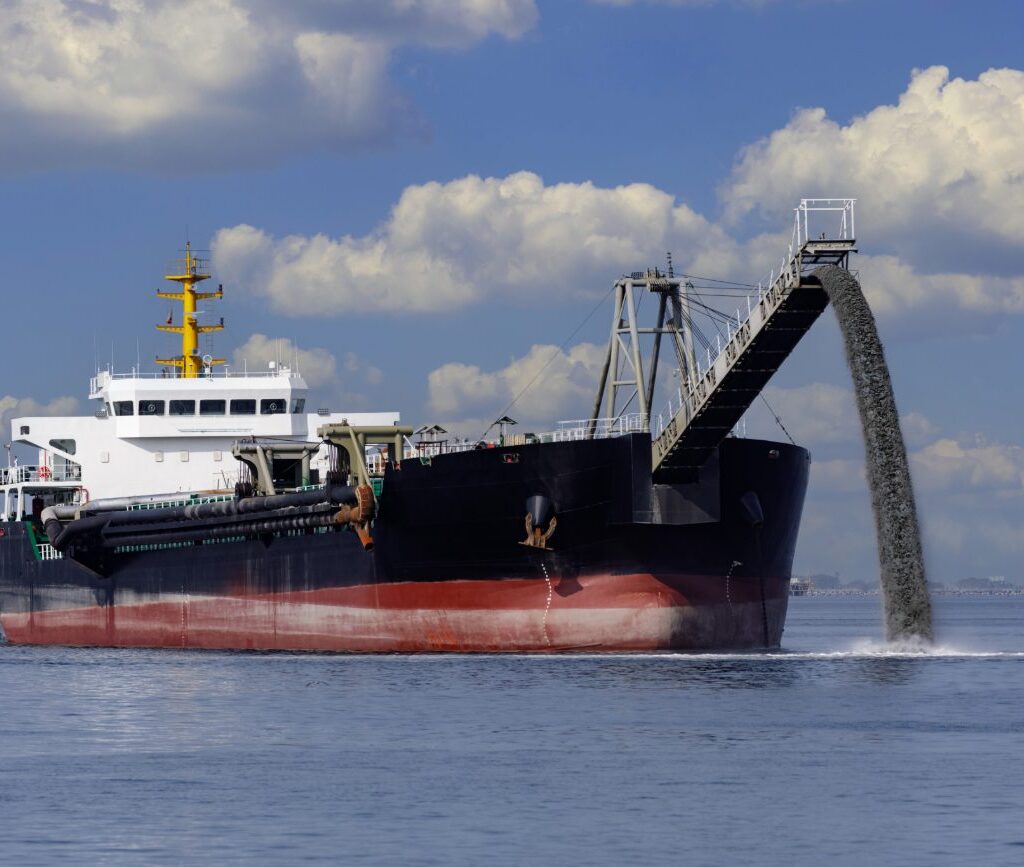
Marine dredging operations utilize a range of techniques tailored to specific site conditions, sediment types, and project goals. The choice of dredging method has a direct impact on operational efficiency, cost, and environmental impact. Three primary techniques dominate the industry: mechanical dredging, hydraulic dredging, and precision-enhancing survey tools.
Mechanical dredging involves the physical excavation of sediments using heavy equipment such as clamshell, dipper, or backhoe dredgers. These are especially effective in marine dredging operations dealing with compacted, rocky, or coarse materials, often found near piers, bridges, and urban water infrastructure. Mechanical methods are ideal for shallow-water applications or where precise control is required. In lake dredging, mechanical dredgers are commonly used for targeted sediment removal in confined or environmentally sensitive areas.
Hydraulic dredging is the preferred method for removing fine, loose sediments over large areas. This technique employs cutter suction dredgers or trailing suction hopper dredgers to break up and transport sediment through pipelines. It is widely used in large-scale marine dredging operations such as beach nourishment, port deepening, and coastal restoration. The ability to handle high volumes makes hydraulic dredging highly effective for projects that demand rapid material movement. In lake dredging, smaller-scale hydraulic units can efficiently handle silts and organic deposits, restoring depth and improving water quality.
Hydrographic survey and monitoring tools enhance the precision of marine dredging operations. Sonar systems, GPS, and real-time monitoring technologies enable operators to track the dredge head’s position, depth, and sediment removal in real-time. These tools are critical for minimizing over-dredging, ensuring regulatory compliance, and reducing environmental disruption. In both coastal and lake dredging, such technologies help achieve accurate bottom profiling and optimize operational planning.
Ultimately, the choice between mechanical and hydraulic techniques in marine dredging operations—and specifically in lake dredging—depends on the type of sediment, project scope, environmental constraints, and budget. Proper technique selection ensures efficient material removal, cost savings, and minimal ecological impact.
Equipment Used in Marine and Lake Dredging
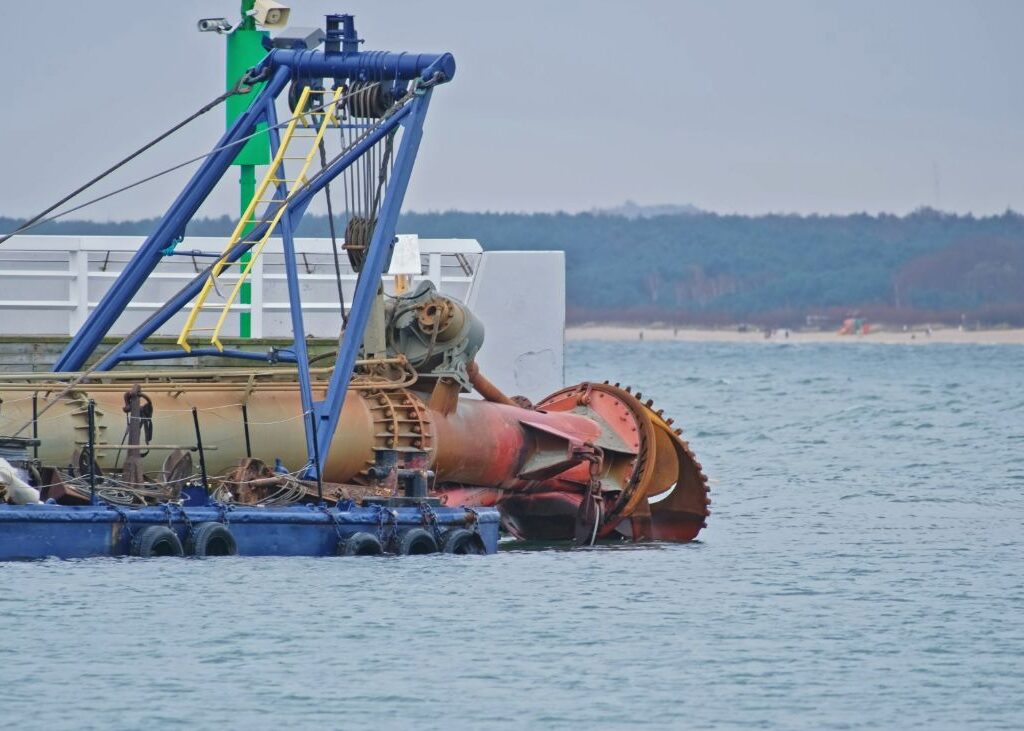
The success of marine dredging operations heavily depends on selecting the right equipment. Different dredging projects—whether offshore, coastal, or inland—require tools designed to match the material type, water depth, project scale, and environmental sensitivity.
Among the most commonly used machines in marine dredging operations are cutter suction dredgers (CSDs). These powerful vessels use rotating cutterheads to dislodge sediment, which is then sucked up and transported via pipeline. They are ideal for harbor deepening, land reclamation, and large-scale sediment removal. CSDs are highly effective in removing cohesive soils such as clay, silt, and compacted sand.
Hopper dredgers—specifically trailing suction hopper dredgers (TSHDs)—are another key asset in marine dredging operations. These self-propelled ships are equipped with suction pipes and onboard storage tanks (hoppers) that collect dredged material. Once full, the vessel transports the material for offshore disposal or beach nourishment. Hopper dredgers are commonly used in deep-water and high-traffic areas where speed and mobility are essential.
Amphibious dredgers provide unique advantages in shallow water or marsh environments. These versatile machines can operate on land and in water, making them particularly useful for environmental cleanup and restoration projects where access is limited.
Supporting equipment, including booster pumps, pipelines, and material transport barges, plays a crucial role in extending the reach and efficiency of marine dredging operations. Booster pumps help maintain pressure in long-distance slurry pipelines, while barges are used to carry dredged material to disposal or processing sites.
Inland water bodies require more specialized tools. For lake dredging, compact and highly maneuverable equipment is preferred. Small cutterheads are particularly effective in confined areas, enabling operators to work closely near docks, shorelines, and residential zones. Dredge sleds—low-profile, remote-controlled platforms—offer an efficient solution for removing sediment from small lakes, ponds, and reservoirs with minimal environmental disturbance. Portable hydraulic dredges are also commonly used due to their ease of transport and setup, especially for private or municipal lake restoration projects.
Together, these tools support the wide-ranging needs of marine dredging operations, from deep-sea projects to precise lake dredging, ensuring both operational effectiveness and environmental stewardship.
Environmental and Regulatory Considerations
Environmental and regulatory considerations are critical components of any successful dredging project. Marine dredging operations, in particular, must adhere to strict guidelines to minimize ecological impact while ensuring safe and compliant sediment removal and disposal.
Sediment management and disposal regulations vary by region but generally focus on the classification, transportation, and disposal of dredged materials. Sediments may contain contaminants such as heavy metals, hydrocarbons, or excess nutrients, especially in industrial or urban waterways. Regulatory agencies require testing and characterization of these materials before disposal. Depending on the findings, sediments may be reused (e.g., for beach nourishment or land reclamation) or disposed of in designated offshore or upland containment areas.
Another key aspect of environmentally responsible marine dredging operations is turbidity control. Dredging disturbs the water column, potentially releasing fine particles and pollutants that harm aquatic ecosystems. Excessive turbidity can smother habitats, reduce light penetration, and disrupt fish spawning and breeding. Turbidity must be continuously monitored and managed throughout the project to ensure water quality is protected and compliance standards are met.
Aquatic habitat protection is closely linked to turbidity control. Sensitive environments such as coral reefs, shellfish beds, and breeding grounds require extra precautions during dredging activities. Seasonal restrictions, species protection plans, and buffer zones are often implemented to reduce risks to marine life.
Permitting requirements are mandatory for both marine and lake dredging projects. Permits typically cover environmental assessments, dredge volumes, sediment disposal plans, and mitigation strategies. Agencies such as the U.S. Army Corps of Engineers (in the U.S.) or similar regulatory bodies in other countries oversee permit issuance and enforcement. Failure to secure proper permits can result in project delays, fines, and legal complications.
To meet environmental standards, contractors often deploy silt curtains, turbidity barriers, and real-time monitoring tools to ensure compliance. These systems help contain suspended particles within the dredging area and track turbidity levels as operations progress. Data from sensors and GPS-guided systems ensures that dredging activities stay within permitted boundaries and minimize environmental impact.
Incorporating strong environmental controls into marine dredging operations not only ensures regulatory compliance but also supports long-term sustainability and community acceptance of the project.
Challenges and Innovations in Marine Dredging

Marine dredging operations frequently encounter various challenges that can affect project timelines, costs, and outcomes. Among the most common are weather conditions, which can delay offshore work, reduce visibility, and compromise crew safety. Sudden storms or high tides can halt operations and damage equipment, particularly in exposed coastal areas.
Another major challenge is sediment variability. The composition of the seabed or lakebed—ranging from soft silt to compacted clay or rock—can change unexpectedly, requiring adjustments in equipment or technique. This variability can lead to wear and tear on machinery, increased fuel consumption, and reduced dredging efficiency if not managed properly.
Logistical constraints also pose difficulties in marine dredging operations. These include limited access to remote sites, transporting large equipment, coordinating material disposal, and managing compliance with environmental regulations. Working in busy ports or environmentally sensitive areas adds complexity due to space limitations and stakeholder involvement.
To address these issues, the industry is embracing technological advancements. Remote-controlled and autonomous dredging systems are becoming increasingly common, enabling safer and more precise operations in challenging environments. Real-time monitoring using sonar, GPS, and flow sensors provides constant feedback, helping operators optimize dredging paths, maintain depth targets, and minimize environmental impact. Automation reduces labor needs, improves consistency, and enables data-driven decision-making.
In response to increasing environmental scrutiny, sustainable dredging practices are also evolving. These include techniques that reduce turbidity, minimize fuel usage, and repurpose dredged materials for ecological restoration or land development. Equipment designs are becoming more energy-efficient, and biodegradable hydraulic fluids are being introduced to lessen the risk of marine pollution.
Together, these innovations are helping marine dredging operations overcome long-standing obstacles while aligning with modern expectations for safety, efficiency, and environmental responsibility.
The Evolving Landscape of Marine Dredging Operations
Marine dredging operations play a crucial role in maintaining global infrastructure, protecting the environment, and ensuring safe and navigable waterways. From deepening harbors to restoring lake ecosystems, these operations support both economic development and ecological balance. The success of any dredging project depends heavily on selecting the right techniques and equipment, tailored to sediment type, site conditions, and project objectives. Whether it’s large-scale coastal projects or targeted lake dredging efforts, a strategic approach ensures effective outcomes. Ultimately, striking a balance between operational efficiency, regulatory compliance, and environmental sustainability is crucial. As technology and best practices continue to evolve, marine dredging operations are becoming more precise, responsible, and impactful in meeting the growing demands of modern water resource management.


